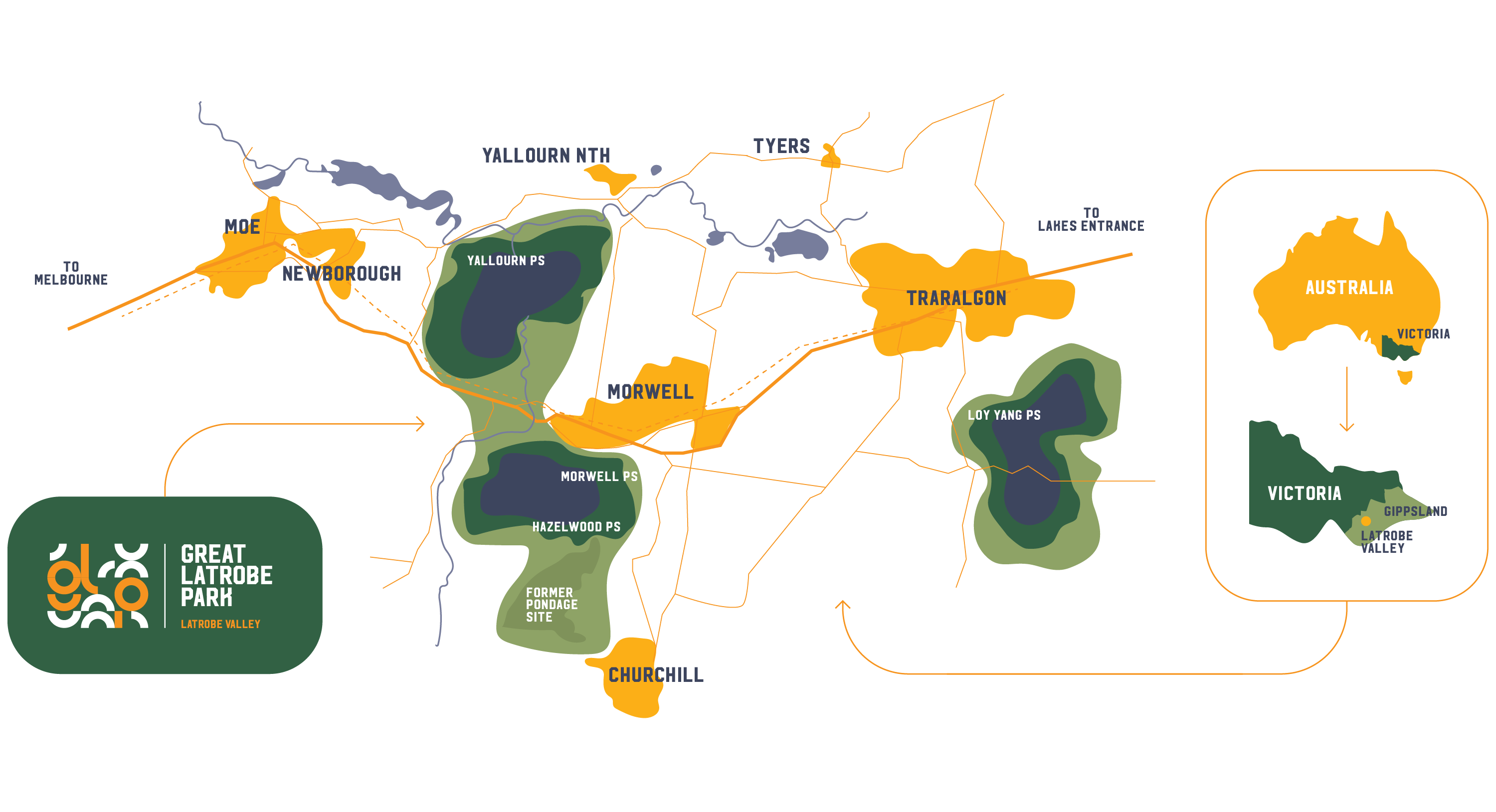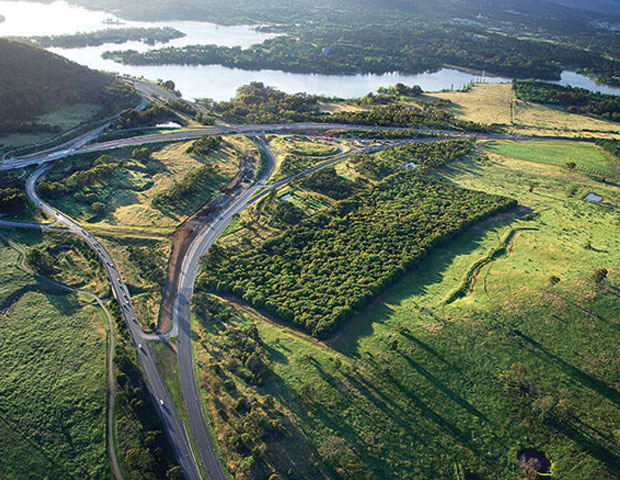
Executive summary
- GLP is an Independent and not politically aligned organisation which advocates for the best outcome that is reasonably possible for the Latrobe Valley Community.
Our mindset in approaching these matters:
- Solution orientated;
- Appropriate processes get best results;
On matters raised by Hazelwood’s Environmental Effects Statement (EES):
- Physical connectivity between the Hazelwood and Yallourn sites is important for walking, cycling, vehicular and fauna movements;
- A range of land-uses should be encouraged to increase economic diversity and add attractive landscapes for people, plants and animals;
- Repurposing of the three mine voids and surrounding areas should be considered concurrently;
- Existing Mine Owners should voluntarily agree to not deal in their land holdings until after landforms are agreed;
- Higher temperature aquifers offer industry and employment opportunities.
Background Statement and One Possible Vision
- Hazelwood Mine requires 400 Mt to 500 Mt of weight to be applied to the floor of the Mine to counterbalance the aquifer pressures that will otherwise push up the Mine floor and result in the batters slumping. [To maintain stable conditions aquifer dewatering has to continue until this weight is placed on the floor of the Mine. If this isn’t water it would need to be dirt (an excavation of 1 km x 1km x 300 to 400 metres deep). In the meantime, more than this weight of water will be pumped out of the aquifer – to be discharged where? Why not the mine? Conclusion – water will be used to achieve the minimum weight balance needs which will mostly fill the mine void. When Loy Yang mine ceases pumping from the same M2 aquifer the M2 aquifer pressures will rebound towards their original (pre-mining) level. This water level will have to be maintained into the long term to maintain the weight balance. Where will water be sourced to make up water losses due to evaporation? What will the water quality be like? What needs to be done and what can be done to improve water quality?
This situation is not repeated at Yallourn and only partially repeated at Loy Yang.
- Hazelwood land holdings amount to 4000+ Ha (40 km2) of which the mine is about 1200 Ha ie there is a further 2800+ Ha. The land holdings can be broken down into lands for which an alternate owner could be found and lands that have residual risks meaning that no-one would purchase them (these are envisaged to be handed to MLRA for long term management). GLP wants an embargo on Owners (not just Hazelwood) selling any of these “surplus” lands until after landscapes and land uses are agreed.
Just because land won’t attract an alternate purchaser due to long term liabilities doesn’t mean it is a useless wasteland. The external overburden dump has ash buried within it making it an unsaleable plot but sustains pastures and cattle and large numbers of native grasses and kangaroos. With appropriate plantings to create corridors down Eel Hole Creek and linking to the Morwell River to the west and the external overburden dump to the east we could have linkages supporting koala habitat and migration. The 5km2 of the external overburden dump could become a major centre supporting Wildlife Rescuers and build towards becoming a zoo to rival Healesville Sanctuary – a potential major tourist attraction, employer and training for vets to rangers. Similarly, the combined lands of the reclaimed Hazelwood Cooling Pond and external overburden dump (more than 10km2) could be used to plant Australian native species historically used for traditional foods. Apart from the interest in observing the arboretum the foods could be harvested and used to support indigenous food industries – more training and job opportunities. The section of Brodribb Road between the former HPS and Nadenbousch’s Road could be closed and the Yinnar Road extended through the Hazelwood site (as it was originally). This would allow the external overburden dump and the former Hazelwood Cooling Pond sites to be integrated for safer movement between them.
- As discussed earlier, dewatering of the M1 and M2 aquifers below the Hazelwood Mine floor is required to maintain stable conditions. The M1 aquifer water is removed at a temperature of around mid 30oC, whilst the M2 aquifer waters are high 40oC to 50o There is a minimum rate at which depressurisation needs to occur to prevent a building of pressures. However, Hazelwood will want to increase the rate of dewatering to minimise the fill time of the Mine. This has potential increased impacts on consolidation and therefore subsidence. During the filling process it will be important that large pressure differentials don’t occur between the aquifer pressure water levels and the water level within the mine void. This could be a major determinate in mine fill rate, irrespective of water sources. If the depressurisation activity was extended over the longer term, the low-grade heat could be removed to support a number of intensive aquaculture, agricultural and horticultural purposes. Again, more diverse industries, employment and training opportunities. The conflict here is that Engie has no incentive to make this possible because it would extend their period of liability. It would require lands on the western proximity of the Hazelwood Mine void to house these industries (hence the embargo request). These enterprises should be set back from:
-
- the mine edge allowing unencumbered public access to the water body, and
- away from MRD5 allowing unencumbered public access to the Morwell River with walking and cycling tracks along it
The embargo on land sale requests is also required to maximise integration of movement between the Hazelwood and Yallourn sites. The former Interconnecting Railway (ICR) bridges under the Princes Freeway and over Commercial Road provide safe vehicular connectivity between the sites (although some of the land may now be held by another owner?)

 BACK
BACK

